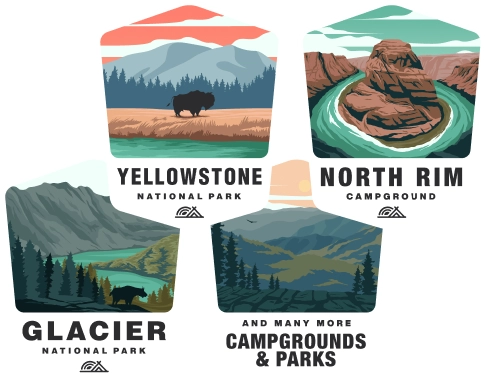Camping at Desolation Canyon Recreation Area
Overview of Desolation Canyon Recreation Area
Desolation Canyon is a remote and stunningly beautiful canyon located in eastern Utah. It's managed by the Bureau of Land Management (BLM) and is part of the larger Green River corridor. The canyon is known for its dramatic landscapes, with towering cliffs, ancient rock art, and abundant wildlife. It is a popular destination for whitewater rafting, camping, hiking, and fishing.
Permit Requirements
Rafting Permits: For rafting trips, you must obtain a permit from the BLM. Permits are issued through a lottery system due to the high demand, especially during the peak season (late spring to early fall). Make sure to apply within the designated application window and adhere to any additional requirements provided by the BLM.
Camping Permits: Backcountry camping along the river is allowed, generally following a leave-no-trace ethic and may require specific permits or adherence to regulations set forth by the BLM. Campsites are often designated to minimize environmental impact.
Camping Guidelines
Leave No Trace: Campers are expected to follow Leave No Trace principles. This includes packing out all trash, minimizing campfire impacts, and using existing campsites whenever possible.
Campfires: Due to the fragile nature of the desert environment, there might be strict rules about campfires. Check the current regulations before you go. Some areas may require you to use a fire pan, and gathering wood is typically not allowed.
Human Waste: The BLM often requires river users to carry out their own human waste. This could mean bringing a portable toilet system and proper waste disposal bags.
Campsites: Use established campsites when available. These sites are typically found on durable surfaces and have been selected to reduce the impact on the environment.
Wildlife and Safety
Wildlife Encounters: The area is home to a variety of wildlife, including bears, mountain lions, and snakes. Be aware of your surroundings and take precautions to store food properly and avoid unwanted encounters.
Water Safety: When on the river, always wear a life jacket (PFD) and be aware of the river conditions. Check water levels and rapid classifications before embarking on a rafting or kayaking trip.
Seasonal Information
Weather Conditions: The weather can be extremely variable with hot summers and cold winters. Monsoon rains in late summer can result in flash floods, which are a serious hazard in desert canyons.
Best Time to Visit: The best time to visit Desolation Canyon for rafting is from late spring to early fall. For camping and hiking, spring and fall are ideal due to cooler temperatures.
Access and Transportation
Getting to Desolation Canyon: Access is typically by river, with the put-in location at Sand Wash, which is reachable by a dirt road that may require a high-clearance vehicle. There are no roads that access the canyon directly; it is a true wilderness area.
Packing Essentials
Gear and Supplies: Given its remoteness, you must be self-sufficient when visiting Desolation Canyon. Bring all necessary gear for camping, rafting, and emergency supplies. This includes plenty of water, a first-aid kit, maps, and the ability to purify water or carry enough for the duration of your trip.
Final Notes
Visiting Desolation Canyon Recreation Area offers an opportunity for an incredible wilderness experience, but it also demands responsibility and preparation. Always check the latest conditions and regulations with the BLM before planning your trip. Respect the environment and other visitors to ensure the preservation of this unique area for future generations.
